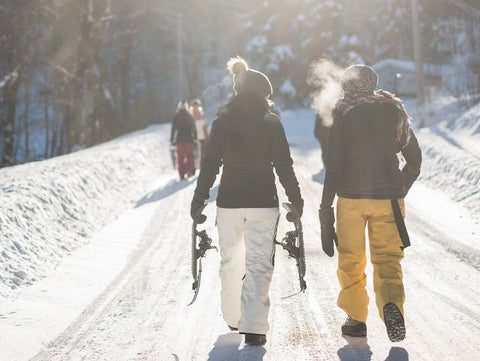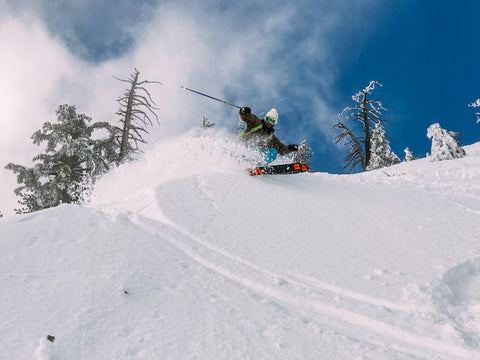Winter sports have always been super popular. However, for some reason, beginners believe that preparation for skiing is all about finding special equipment. First of all, the right body shape is simply necessary. Otherwise, pains in the joints and muscles are inevitable, and even worse, injuries are possible.
Many experts claim that the most important point is to prepare the muscles for loads that will be quite large. Therefore, we have created a guide on how to bring your body in order and have fun later.
Thus, hurry up to free your busy schedule, send your home assignments to the best paper writing service, then make a workout plan and dive into the process! You definitely want to feel absolutely confident on the slopes, right?

Work On The Abs
Good abs help skiers and snowboarders maintain excellent balance. Without turning on the abdominal muscles during skiing, it’s super difficult to control skis and almost impossible to control snowboarding.
Therefore, we recommend performing leg lifts, all kinds of twists, and other exercises to make your press stronger. They strengthen the abs very well and help develop a sense of balance for your further activity on unstable platforms. In addition, this type of activity strengthens the ankle joint quite well, which is necessary for skiing in unusual boots.
Focus On Your Back Muscles
Skiing or snowboarding is accompanied by a strong load on the spine. To strengthen the back muscles, perform torso lifts from lying on the stomach position. You can definitely make this exercise a part of your healthy schedule since the back is usually under a lot of stress. At the same time, yoga will help to relax the back and avoid muscle tightness.
Strengthen Your Hands
Hands also play a big role during skating. They are actively used between descents when you need to carry a snowboard or skis. Without strengthening your arms, it will be difficult to even dress yourself. Strengthening the biceps and chest muscles is facilitated by push-ups. For triceps, reverse push-ups are useful.
Prevent The Ligament Damage
Strengthening the ligaments is of great importance. Ski and snowboard boots rigidly fix the ankle joints in order to avoid injuries.
But after wearing such shoes for a long time, the ligaments loosen, resulting in an increased risk of sprains or dislocations when walking in regular shoes. To strengthen the ligaments, try lifting on toes, jumping rope, and rotating the foot.
Actually, leg training for skiers and snowboarders does differ. The legs of skiers are used to heavy loads.
Therefore, it’s key to perform side lunges of the legs, opening and closing them in the lying on the back position, and moving them to the side.
Also, exercises that help strengthen the outer and inner thighs help master the right descent techniques.
Snowboarders’ feet are also subject to significant stress. When the body weight is transferred from the heel to the toe, the main emphasis lies on the feet when sliding. In order to not use the calves, it’s basic to strengthen the back of the thigh.
And here’s a tip for the future. When wearing the equipment, always do a warm-up: do rotation in the knee joints, put your torso tilts to the sides, forward and backward, and don’t forget about arm rotations and leg swings. After a day on the mountain, you should definitely do stretching exercises to feel ready for another day full of achievements.
Another 5 Effective Exercises
Squats
The best way to strengthen your knee joints is to perform squats. Do them three times a day, spending at least 30 times on each approach. Bend your knees at no more than a 90-degree angle, and make sure that your knees are above the foot. Don’t slouch. Squats are best done in the main skating stance: feet shoulder-width apart. Classic squats can be alternated with light, springy semi-squats.
Tilts
Springy tilts to the left and right are performed strictly in the same plane - without tilting the body forward or backward. Don’t forget about forward bends: they can be performed by touching the floor with your fingers, and you can also use weighting. Take a dumbbell or a water bottle as a load. Hold the weight with both hands at chest level. The maximum weight is 2 kg. It’s important to keep your back straight and don’t bend your knees.
Balance
Stretch one leg back, making a swallow. Keep your head in line with your body, looking down. Hold the balance for one minute, watching how the knee and ankle joints are included in the work. Repeat with the other leg. If you don’t succeed, take a short break to relax and then start the exercises again.
Push-ups
To strengthen the muscles of the shoulder girdle, push-ups in the lying position are useful. And you can do push-ups from the bench: just put your hands on its side. Lower yourself down, slowly bending your elbows to an angle of 90 degrees, then rise, straightening your arms. Repeat 10-15 times.

Leg Raises
Slowly raise your leg when you are in the supine position. To avoid muscle spasms, pull the toe of your foot towards you. A more intense version of this exercise includes weighting: you can put on a ski boot on your leg. Three sets of 10-15 lifts are enough.
To Wrap It Up
Basically, skiing can result in a number of troubles for an unprepared person - from muscle pain to ligament ruptures and fractures. In order to avoid injuries and disappointment, think about what your ski season will be like.
Why not do research on which muscle groups will be the most needed during your activity?
Anyways, experts agree on one thing: the preparatory complex should include squats, bends, stretching, and balance exercises. Plus, you shouldn’t give up cyclic sports, be it brisk walking, running, or swimming.
Of course, don’t forget about proper nutrition. Protein powder will help speed up muscle synthesis. As for carbohydrates, they do matter as well, especially complex ones.
Therefore, healthy nutrition and suitable exercises will definitely make you feel confident at the start of the ski season. Good luck!
ABOUT THE AUTHOR
Fred Felton
Content Creator / Editor
Fred Felton is a copywriter, editor and social media specialist based in Durban, South Africa. He has over 20 years of experience in creating high end content. He has worked with some of the biggest brands in the world. Currently Fred specialises in the winter outdoors space, focussing on skiing and snowboarding. He is also a keynote speaker and has presented talks and workshops in South Africa.






